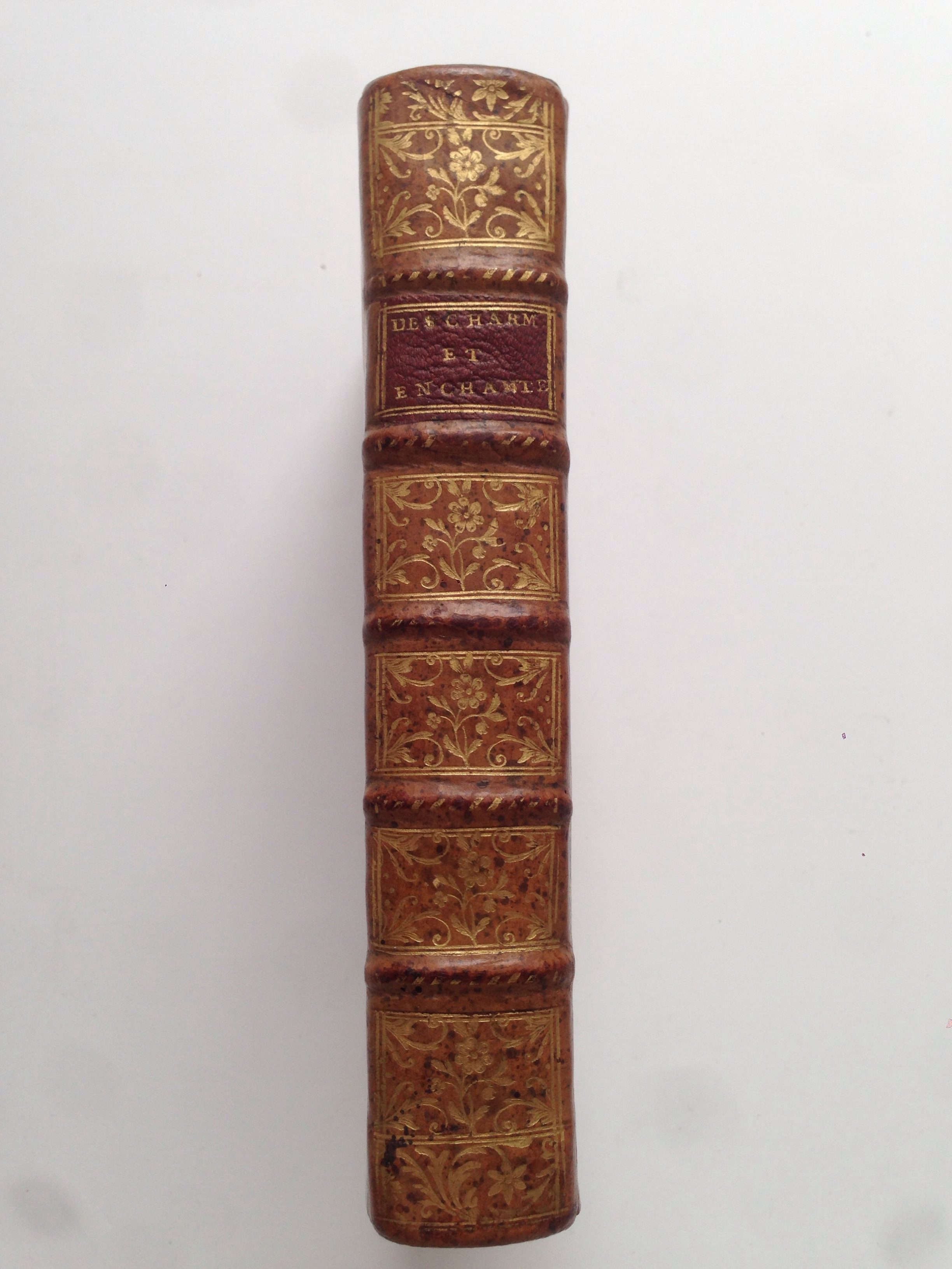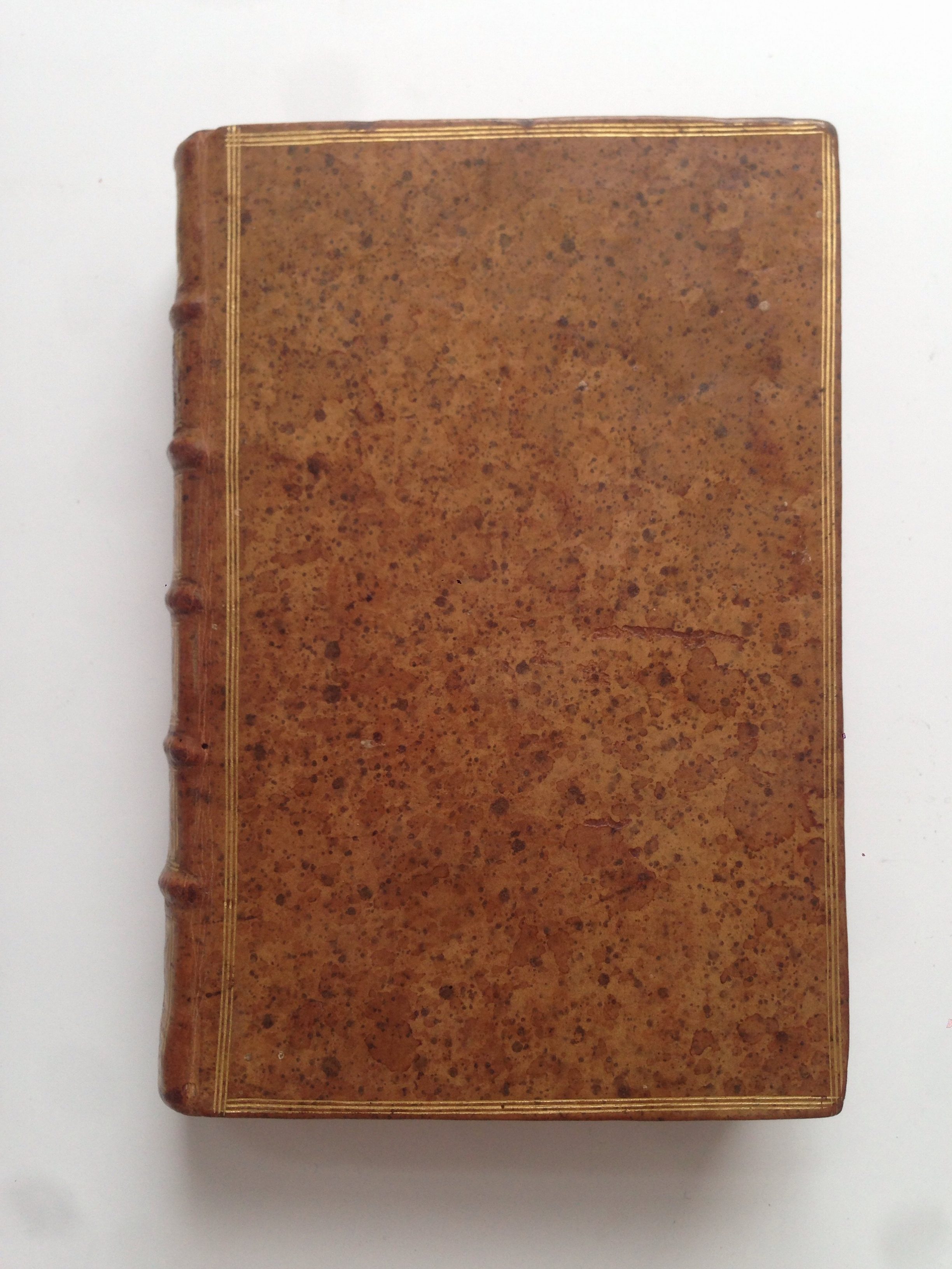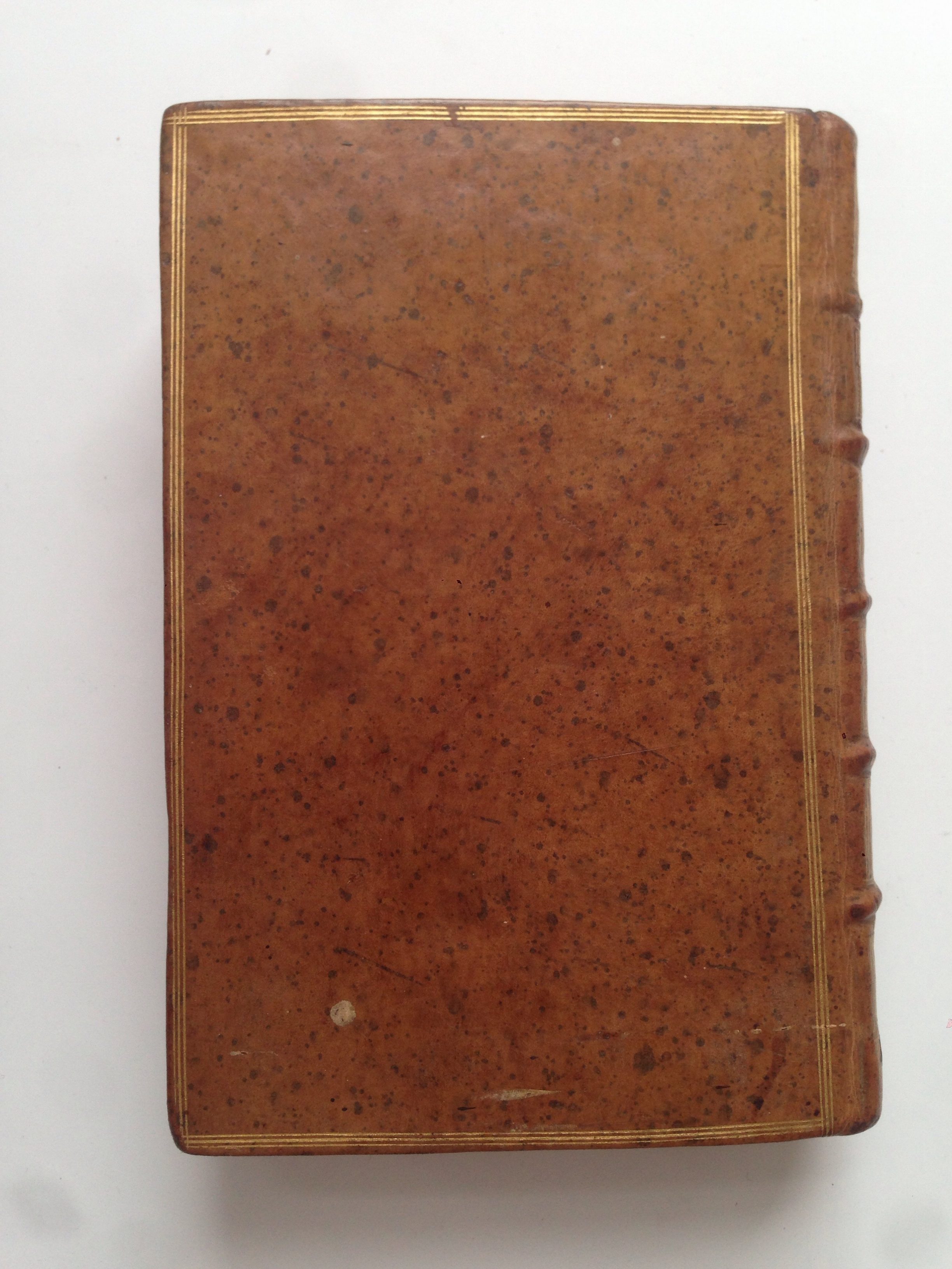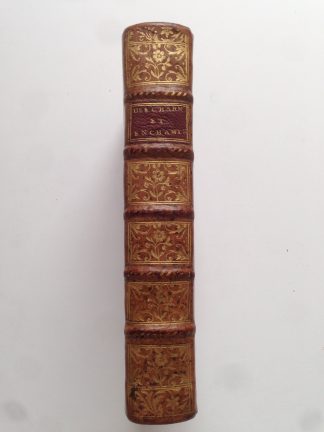VAIRO, Leonardo
Trois livres des charmes, sorcelages ou enchantemens..auec les vrais contrepoisons pour rabattre les impostures & illusions des Daemons..
Paris, chez Nicolas Chesneau, 1583£4,950.00
FIRST EDITION thus. 8vo. pp. [xvi] 553 [lxxi ]. ã8, A-Z8, Aa-Qq8. Roman letter, some Italic. Small woodcut printer’s device on title, floriated woodcut initials, grotesque headpieces, verses in a seventeenth century hand on rear fly in French, addressed to Doctors and surgeons, bookplate of Eric Gruaz on pastedown. Light age yellowing, the odd marginal spot or very pale stain, small ink splash on title, pale waterstain in upper blank margin in places. A good copy, crisp and clean, with good margins, in handsome C18th speckled French polished calf, covers bordered with a triple gilt rule, spine with gilt ruled raised bands, double gilt ruled in compartments, richly gilt with central fleurons and pointillée tools, gilt ruled edges, red morocco label gilt, marbled endpapers .a.e.r.
First edition in French translation of this important work on diabolic possession, one of the major works on the subject of the the sixteenth century; it was published simultaneously by Chesneau in 1583 in Latin as ‘De fascino libri tres’ and again in 1589 in Latin by the Aldine press. Vairo, born in Spain, became a Benedictine, and later Bishop of Pozzuoli near Naples. The work deals with the question of diabolic possession and fascination by witches, which the author attributes to the influence of devils. Vairo defines “fascinum” as “a pernicious quality induced by art of demons because of tacit or express pact of men with the same demons”. He denies fascination by power of imagination, by strength or morbidity of vision, by touch and contact, and observation of stars. In his last chapter Vairo treats of safeguards and amulets against the impostures and illusions of demons.
“Further early studies that associate fascination with witchcraft include … Leonardo Vairo’s De fascino libris tres. In these accounts, fascination is used almost as a synonym fro malignant influences brought about by a silent pact with the devil and black magic and is closely connected to visual enchantment. The belief in the evil or bewitching eye (the oculus fascinus), which could enthral, immobilise and even kill simply by a glance.” Sibylle Baumbach ‘Literature and Fascination’.The work is also of particular interest for its focus on the link between demonic corruption and ‘melancholy’. “The delusory powers of melancholy so useful to demons, the demonologists were also often wont to point out, could also be extended to the deceptive demonic practise of aping divine miracles. Among the miracles especially notable for being aped by demons, as illustrated by the Neopolitan Benedictine Leonardo Vairo is the miraculous power to prophesy the future. For it was Vairo’s aim, under the heading De Fascino, to reconcile extraordinary powers of prophetic insight in melancholics with their corresponding vulnerability to demonic corruption.” This attribution of demonic power extended for Vairo to such things as Poisons. “Poison was one of the great fears of the age. Its threat lay in the fact that its mode of operation was considered similar to that of magical spells and sorcery. For Leonardo Vairo.. veneficia were the same as Maleficia: not poisons so much as bewitchments, the horrible effects of which could be ascribed to demons.” David Gentilcore. ‘Healers and Healing in Early Modern Italy’.
A very good copy of this important demonological wrk.
In stock







